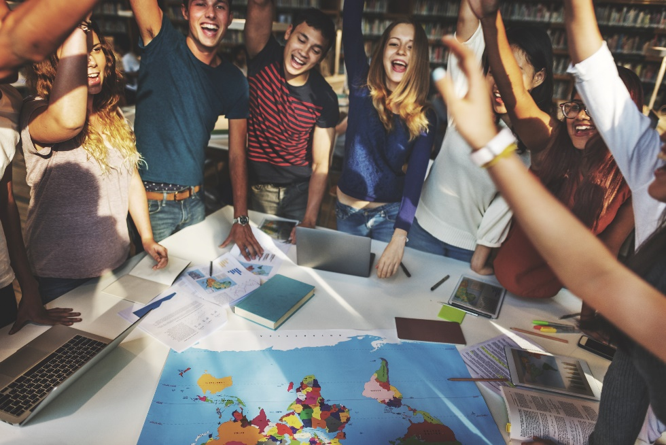Editor’s note: This post is one in a series authored by ALP’s Katy Fodchuk entitled Change Leadership: Helping, Mastery, and Appreciative Inquiry, in which she revisits the work of her “guru guides” whose practices and research in numerous organizations have been key drivers in her approach to educational leadership consulting.
“Organizations learn only through individuals who learn. Individual learning does not guarantee organizational learning. But without it no organizational learning occurs.” (Senge, 2006, p.129)
In the first installment of my three-part series on change leadership in education, I described a consulting approach called “humble inquiry” that was developed by management guru Edgar Schein (2013, 2016). Schein emphasizes the importance of building strong relationships to provide effective help to organizations faster. With this second focus, I explore Peter Senge’s work and highlight the concept of “personal mastery” as a catalyst for shifting toward a learning organization.
As an organization, ALP works collaboratively with districts to implement change at the systems level. Most often this change includes integration of deeper and more personal growth experiences for all learners in a district (students, teachers, coaches, leaders, etc.). The key components of a rigorous personalized learning integration include:
- Passionate, Inspired and Personal Learning Experiences
- Flexible Learning
- Personal Connections
- Formative and Collaborative Assessment
- Technology as a catalyst
While implementing this model this is no simple feat, our district partners strive to transform their community in systemic efforts toward the essential goal: becoming a learning organization.
In his book The Fifth Discipline: The Art and Practice of the Learning Organization, Peter Senge describes five disciplines, or ongoing activities we integrate into our lives, that underlie a “learning organization.” These disciplines nicely dovetail with personalized learning key components referenced above. While all five disciplines are critical to meaningful change in organizations, I summarize “personal mastery” below as I have found it has deep connections to personalized leaning. I also offer general examples of how these ideas integrate with a professional learning change model. Because our design approach is collaborative and often varies given each district’s needs and opportunities, I will describe this component of Senge’s work as a guiding philosophy and possible path for implementing district-wide transformative change.
Foster a Climate of Personal Mastery
While grounded in competence and skills, Senge (2006) describes personal mastery and proficiency as going beyond such to approach life from a creative and curious (versus reactive) perspective. Personal mastery, also referred to as personal growth and learning, is not a possession but a process or a life-long discipline. It involves passion, inquisitive thinking, truth seeking, and resilience in learning. Senge adds that personal mastery does not infer “dominance” over a skill or subject but includes individuals with a heightened ability to produce results they want in life through generative learning.
In organizations, employees with personal mastery are more passionate and committed to their work, take more initiative, learn faster, are happier, and possess a wider and more profound responsibility for their work (Senge, 2006). Building a climate for mastery, whether it be within the superintendent’s cabinet, a middle school, or in a first-grade classroom, is critical to scaling deeper and personalized learning models by fostering values for personal growth and mastery among administrators, staff, and students.
Given its profound impact on an organization, ALP works to leverage existing and design new professional learning initiatives that foster personal mastery. This aspect of the professional learning plan supports personalized learning key component of Passionate, Inspired, and Personal Learning (see above). Indeed, a foundational component of professional learning design includes specific skill building and work that identifies connections between individual educators’ sense of personal mastery surrounding teaching and learning and a district’s change model. When enhanced pathways and access to learning opens through the personalized learning, the personal mastery discipline competencies become crucial to sustaining positive momentum.
Another essential concept within personal mastery is the creative tension that arises from the juxtaposition of vision (where we want to be) and reality (where we are). During organizational change efforts members who are not committed often confuse creative tension with emotional tension that stems from feelings of anxiety and/or frustration surrounding the change. Generating and sustaining creative tension is central to any type of meaningful innovation. While collaborating with education leaders, an effective consultant honors this creative tension and helps leaders separate it from emotional tension. Shedding light on this creative tension and leveraging the opportunities it presents is where true organizational transformation occurs.
References:
Senge, P. M. (2006). The fifth discipline: The art and practice of the learning organization. New York: Doubleday/Currency.

